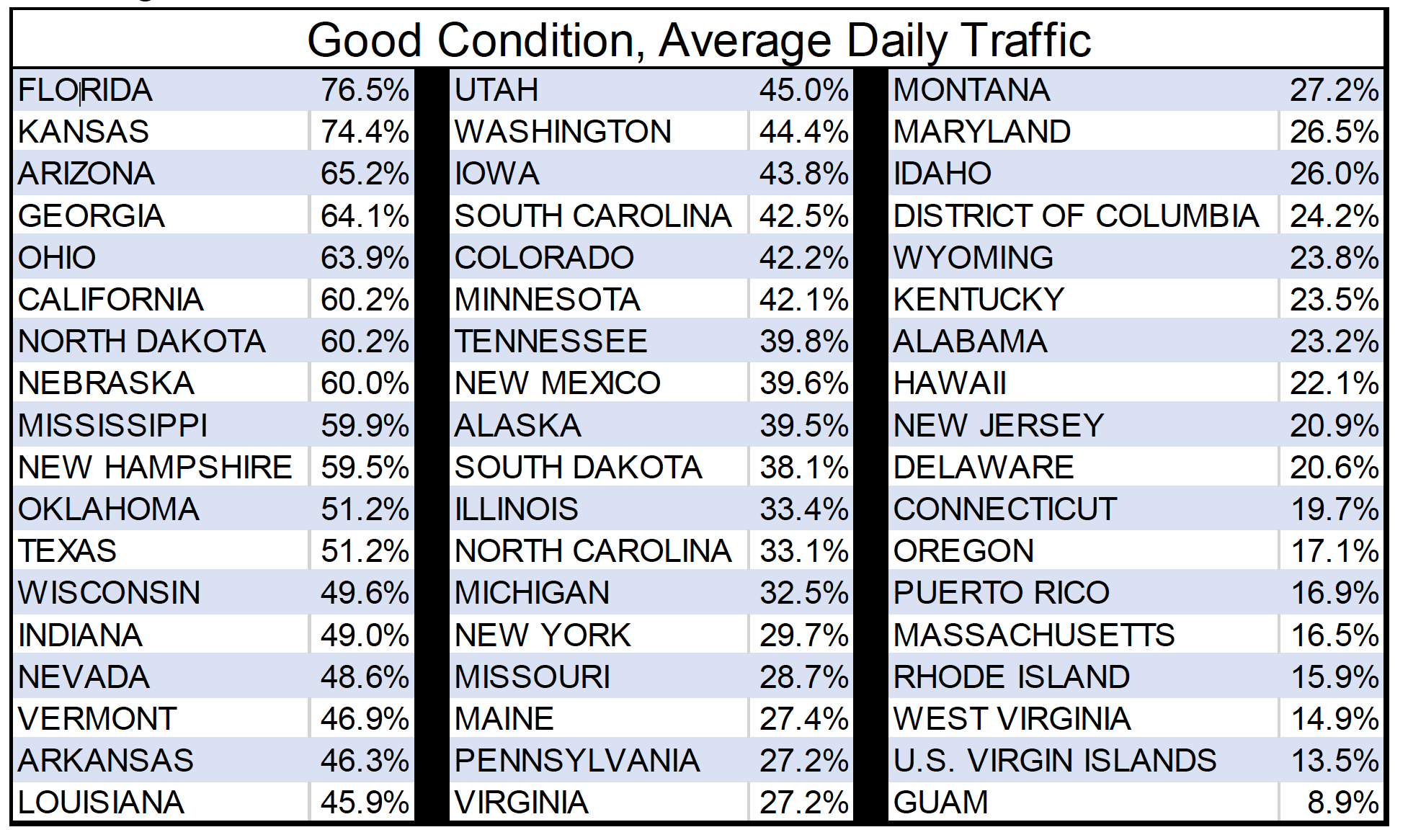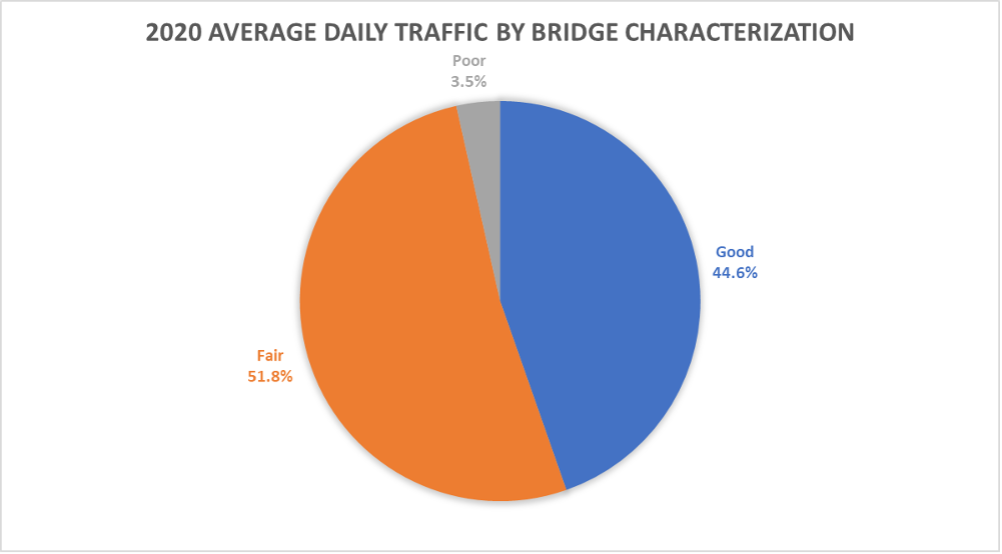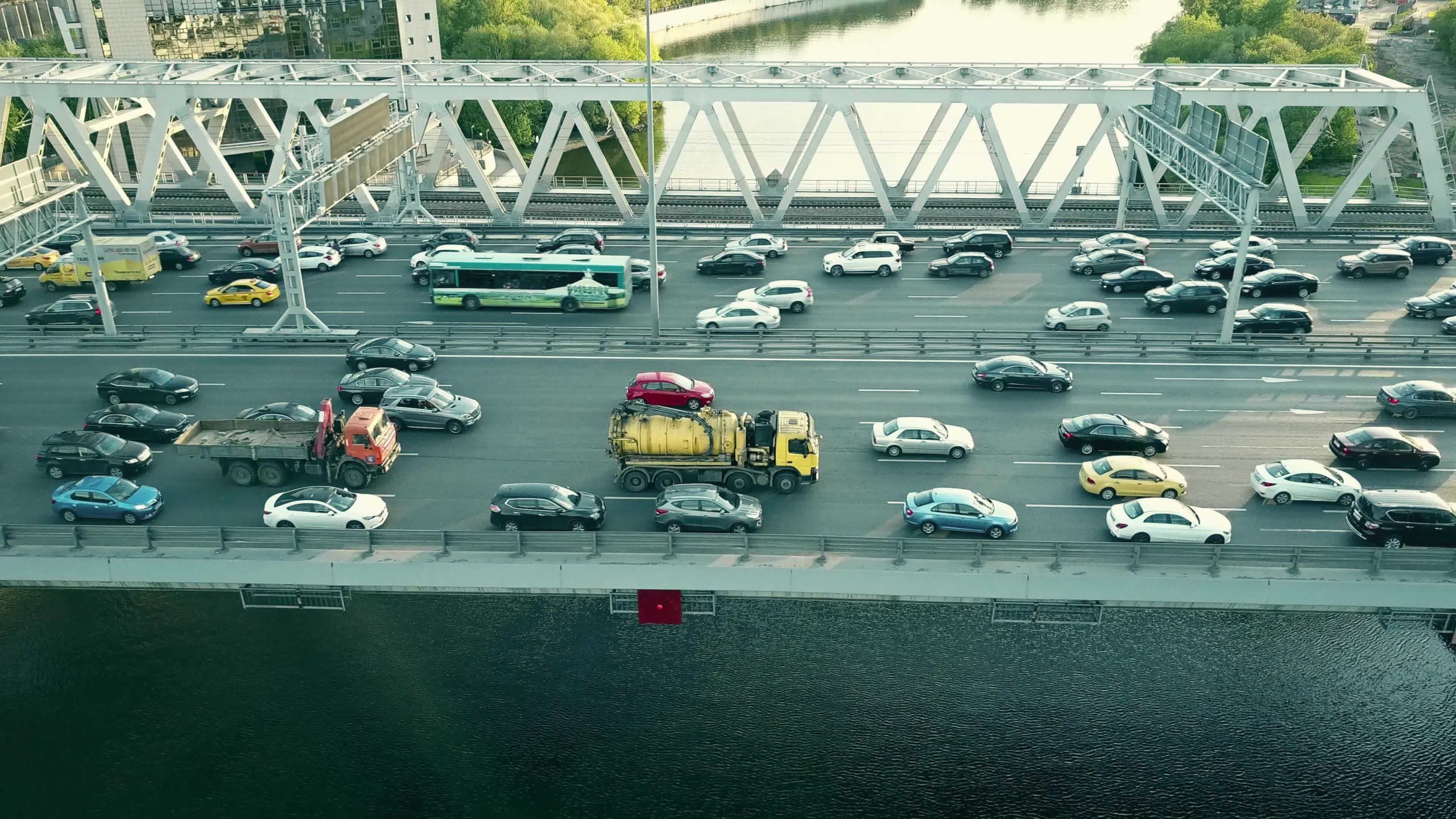Congress is on the verge of passing a massive infrastructure bill to address America’s crumbling infrastructure. Focused on transportation, utilities, and cleaning up pollution, about $110 billion may be allocated to rebuilding an estimated 20,000 miles of the nation’s roads and 10,000 bridges, including the 10 most economically important bridges. As we await the details, let’s look at just how bad the bridges are in your state – and at some hopeful innovation.
The Federal Highway Administration (FHWA) releases bridge condition data. Every bridge, large and small, is carefully inspected. Engineers record a myriad of findings about the deck, superstructure, substructure, and more, of each bridge. This mass of data leads to bridges being characterized as “good”, “fair”, or “poor”.
Merely looking at a count of bridges is not the best way to get a feel or the amount of bridge repairs required in each state. Average daily traffic (ADT), or the number of vehicles crossing bridges, is a better way to judge it. The table below ranks all 50 states and Washington, DC, Guam, Puerto Rico, and the U.S. Virgin Islands by average daily traffic (ADT), or the number of vehicles crossing bridges, in each state.

Source: Federal Highway Administration
For example, in Florida, 76.5% of all bridge crossings were on bridges rated to be in “good” condition. In contrast, only 14.9% of bridge crossings in West Virginia were on bridges rated “good” condition. In densely populated New Jersey – which creates a large volume of traffic – only 20.9% of crossings were on “good” bridges. Put another way, 79.1% of bridge crossings in New Jersey were on bridges needing repairs.
While it’s no secret that America’s infrastructure needs repair, there is

Source: Federal Highway Administration
also innovations in the works. The accelerated bridge construction (ABC) process encourages innovative planning, design, materials, and construction methods to reduce onsite construction times, increase safety and minimize detours and other inconveniences when building new bridges or repairing existing bridges. As the pace of innovation around electric vehicles increases, Indiana is in the process of becoming the first U.S. state to pilot a new road building system that embeds electrically charged coils in the roadbed to charge electric vehicles as they drive. We’ll surely see more on this in the near future as the demand for electric vehicles continues to rise.
To obtain more detailed data about the status bridges and other infrastructure in your local community, please contact data@statebook.com. And feel free to explore example StateBook data collected and visualized for every location across the U.S. in our interactive Calypso API.

